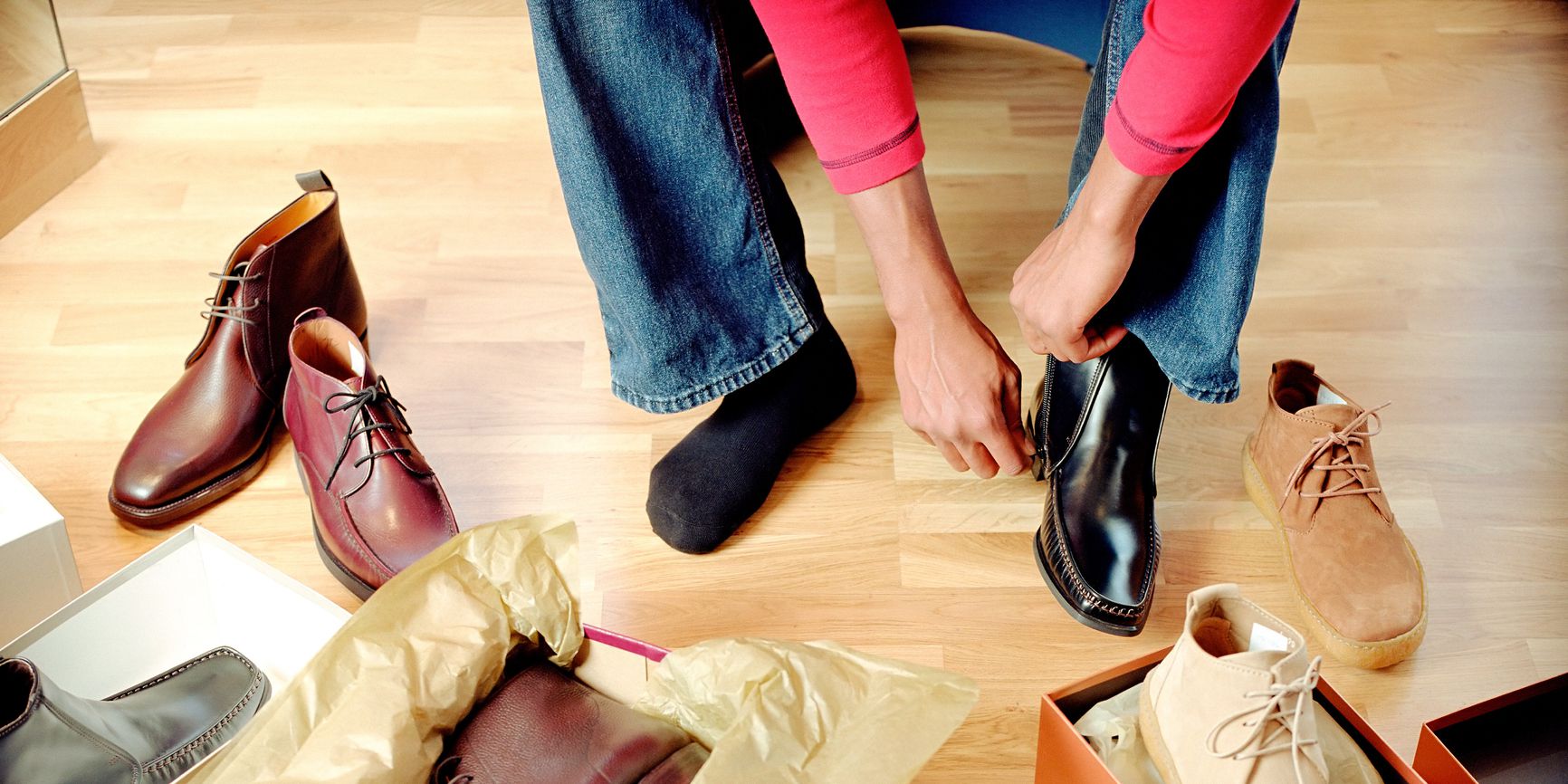
There’s a good chance you’ve lost count of how many pairs of shoes you’ve bought over the course of your life. Most of us have probably spent hundreds, if not thousands, of dollars on them, whether you’re a diehard sneaker-head or prefer to keep it simple. But how much do you actually know about what makes a shoe worth buying? And how do you ensure that it will actually last?
Buying shoes can become such a routine thing that you may not even realize you’re doing it wrong. (Many people assume that a shoe’s quality is directly correlated to its price, which is not always the case.) To help you get started on the right path, we reached out to an expert, someone who has made a career out of figuring out what goes into making a quality pair of shoes (or in his case, boots). Nolan Walsh is the man behind Thursday Boot Company, a direct-to-consumer manufacturer of boots and other leather goods. His wealth of knowledge is second to none and his advice proved invaluable, touching on broad style tips and niche facets of the craft behind shoes that you’ve likely never considered.
BE REALISTIC ABOUT ITS USE AND YOUR LIFESTYLE
The first step in buying new shoes is figuring out what you need from them. Yes, style and comfort are both important but you also need to make sure the shoe you’re buying isn’t ultimately antithetical to what you need from it. One of the first things Nolan advises you look for in a boot or shoe is a durable outsole with appropriate traction for the environment in which you’ll be wearing it. For example, if you frequently work outdoors, a boot with a smooth sole is going to be pretty useless. It’d be far more pertinent to get one with a chunky, ridged outsole. Similarly, if you’re getting a shoe you’ll be using for workouts that primarily utilize weightlifting, you may not want to get a running shoe, despite the fact that they both seem to be great for fitness. In short, no matter what kind of footwear you’re buying, pay attention to the sole. It’s going to be a significant factor in determining whether or not the shoe will meet your needs.
RED FLAGS
Okay, so you’ve got a dope new pair of sneakers, or maybe a crisp new pair of dress shoes, picked out. You’ve assessed your needs and found the shoe that meets them. And now you’re either in a store pulling them off the shelf or opening the box from your web order. What’s next?
Inspect those shoes thoroughly. There are a number of red flags to keep an eye out for to make sure you’re not getting a pair that lacks craftsmanship or, worse, is defective. When it comes to buying boots or shoes that prominently incorporate leather, Nolan offers that the easiest way to tell the quality of leather is to touch it. “If it’s been overpainted you will feel that paint texture on the leather,” he advises, “Similarly, if the leather is exceptionally monotone you are likely holding an over-finished split grain product.” This point is particularly interesting – real leather shouldn’t look 100% sleek and spotless. Over-finishing can be detrimental to the leather’s long-term durability, or worse, can be used to cover up a low-quality leather.
After that, take a look at the outsole. When it comes to boots and leather shoes, Nolan advises you to take a good, hard look at the welt (or, more specifically, make sure you’re getting a shoe that has one), which is the lining that runs along the perimeter of a shoe’s outsole. There are a few different kinds, with Nolan’s company using four different kinds of welts across their line (goodyear welt, stitchout, veldtschoen, or stormwelt). A shoe featuring a welt is going to last longer, be more resistant to water, and perhaps most crucially allows it to be re-soled. While you’re at it, check the outsole for durability and flexibility – an outsole that doesn’t move isn’t going to be particularly comfortable in the long-term.
Lastly, inspect the construction as a whole. Keep an eye out for cheap glue, lousy cuts of leather or fabric, and especially the stitching – poor stitching means it’s going to fall apart way faster than you want them to.
BUY FOR THE WARDROBE YOU ALREADY HAVE
Having trouble figuring out what style of shoe to buy? Nolan advises you to keep your closet in mind. When asked if there’s any particular reason he’d recommend a customer a lace-up boot over, say, a Chelsea boot he said, “I think it really depends what is already in someone’s closet and their budget.” He’s right. From the style of shoe you buy to the color it comes in, you should make sure you’ll actually be able to pull it off with the wardrobe arsenal you’re already rocking. Sneakers and boots tend to be everyday-wear for most guys so dropping a big chunk of cash on a pair that doesn’t really work with your go-to wardrobe is ultimately going to leave you unsatisfied. “Footwear can make or break a good wardrobe,” Nolan says, “so I would advise my fellow footwear fans to invest in styles they think compliment their daily wardrobes and they will enjoy wearing for years to come.”
A great shoe can be the touch that ties a killer outfit – or a killer wardrobe as a whole – together. With these tips in mind, you should be able to pick out your next pair confidently, knowing both your feet and your wallet are making the right investment.
